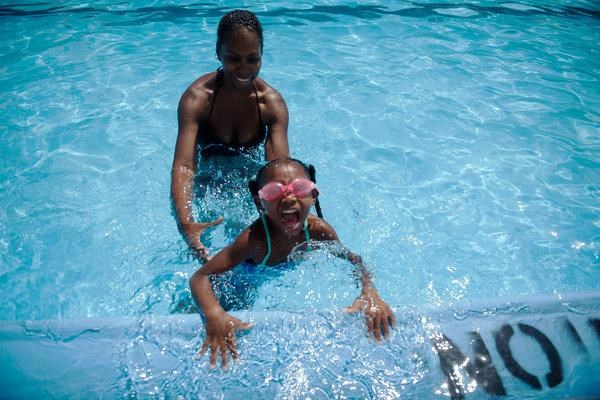The New York City Health Department has launched "Making Waves," a free swim instruction program set up in underserved neighborhoods to reduce the disproportionate risk of drowning among Black and Latino children in NYC.
According to the Centers for Disease Control and Prevention, black kids ages 5 to 19 are five times more likely to drown in a swimming pool than their white peers; at ages 11 to 12, black children drown in pools at ten times the rate of white children.
The program teaches water safety and swimming to 6- to 18-year-old kids and youth from low-income neighborhoods around the city. So far, according to city officials, the "Making Waves" initiative has already taught more than 2,500 children how to swim this summer.
"Teaching children to swim gives them a skill that may one day save their life," said Health Commissioner Dr. Mary T. Bassett. "This program uses pools in schools that may not be used in the summer months to enhance access to swimming lessons in communities where we know many children do not learn to swim."
First launched in 2015, the program has enabled summer and after-school programs, such as the Cornerstone and Beacon camps, to expand their offerings to include swimming and to take advantage of pools in public schools not being used in the summer months. Of the ten city pools that are being used for the initiative, three are in Brooklyn, including two new pools added this year at Brooklyn Tech High School in Fort Greene and the Erasmus Hall Campus in Flatbush. The program currently is serving more than 600 Brooklyn children.
"I appreciate the leadership of DOHMH, DOE and DCYD in expanding Making Waves to provide children from underserved neighborhoods with the skills that every New Yorker should possess around the water," said Brooklyn Borough President Eric L. Adams. "Swimming should be thought of as more than a healthy way to get fit; it's a life-saving exercise that everyone should think of as a rite of passage."
Health department surveys of past Making Waves participants show that a child's fear of drowning and injury, and the lack of access to a swimming facility, were the main barriers to learning to swim. Also, a long national history of segregated "whites only" pools made swimming seem inaccessible to excluded communities.
"Overall, the program is amazing, because these kids don't have these experiences, and some of them have never been to a pool before," said Ashley Sanabria, a swim instructor for Making Waves. "Doing this means they get to have fun, exercise, and learn to swim and be safe in the water."
The health department encourages all parents of children and young adults who are eligible for Making Waves to enroll. For more information about Making Waves, visit nyc.gov/health/MakingWaves.




